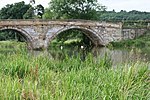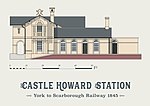Westow

Westow is a village and civil parish in North Yorkshire, England. Westow is situated in the lee of Spy Hill, bordering the Howardian Hills Area of Outstanding Natural Beauty, 3 miles (4.8 km) from the A64 road linking Leeds to the East Coast, 5 miles (8 km) west of the town of Malton, and 15 miles (24 km) east of the city of York. The village was within the historic boundaries of the East Riding of Yorkshire until 1974. From 1974 to 2023, it was part of the Ryedale district. It is now administered by North Yorkshire Council. The village has traditional associations with agriculture and is a popular sporting area in the summer. There are regular Pétanque tournaments in the village involving teams from all over Yorkshire. Westow has a village cricket team with records dating back to 1875. The civil parish also includes the hamlets of Firby and Kirkham. The population of the civil parish was 339 in the 2011 Census. Neighboring villages are Crambe, Whitwell-on-the-Hill, Welburn, Howsham, Leavening and Burythorpe.
Excerpt from the Wikipedia article Westow (License: CC BY-SA 3.0, Authors, Images).Westow
Henlow Lane,
Geographical coordinates (GPS) Address Nearby Places Show on map
Geographical coordinates (GPS)
| Latitude | Longitude |
|---|---|
| N 54.0775 ° | E -0.84933 ° |
Address
Henlow Lane
Henlow Lane
YO60 7NH
England, United Kingdom
Open on Google Maps











